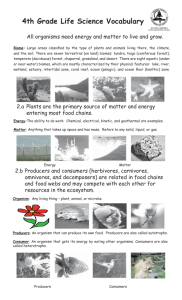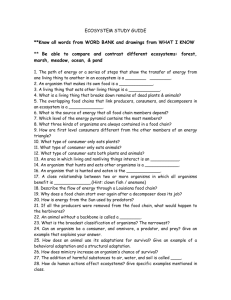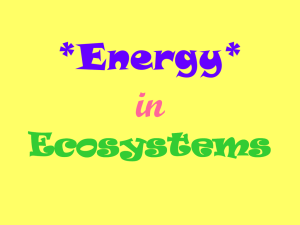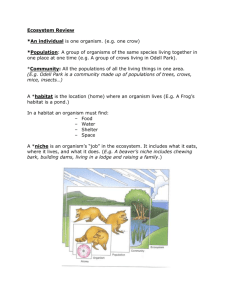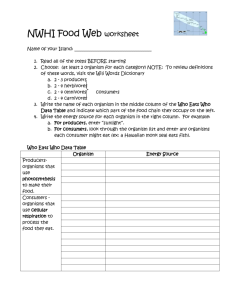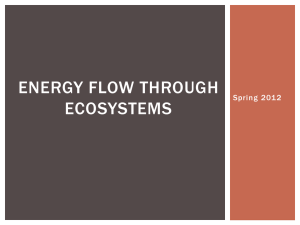energy flow in ecosystems - NivelesDeIngles
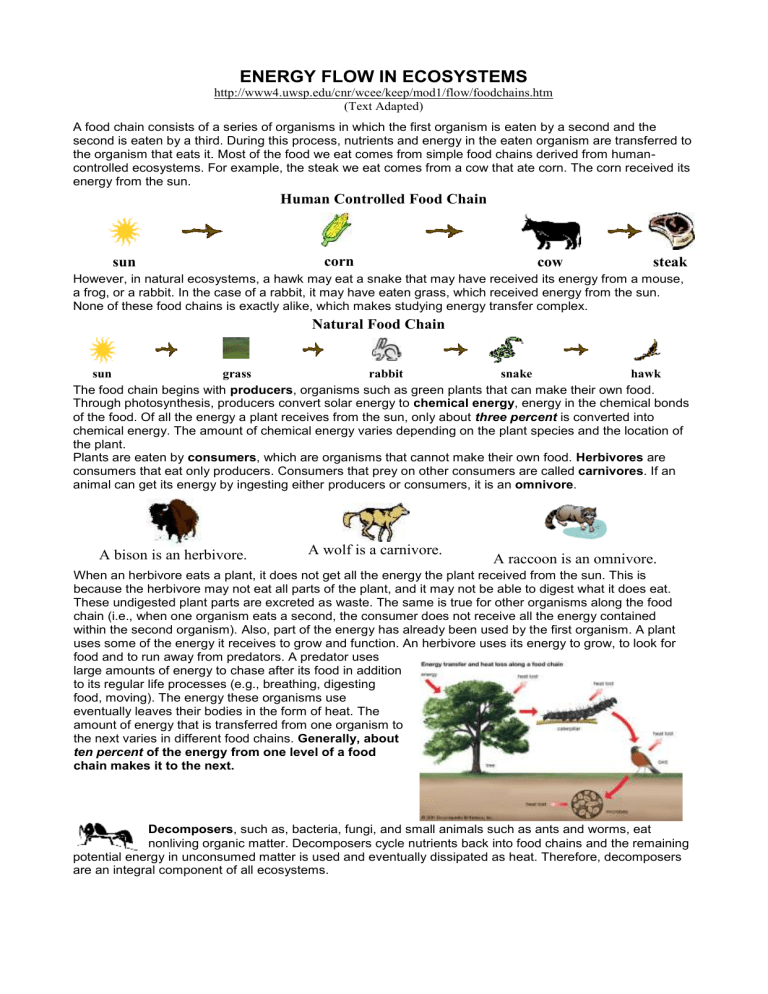
ENERGY FLOW IN ECOSYSTEMS
http://www4.uwsp.edu/cnr/wcee/keep/mod1/flow/foodchains.htm
(Text Adapted)
A food chain consists of a series of organisms in which the first organism is eaten by a second and the second is eaten by a third. During this process, nutrients and energy in the eaten organism are transferred to the organism that eats it. Most of the food we eat comes from simple food chains derived from humancontrolled ecosystems. For example, the steak we eat comes from a cow that ate corn. The corn received its energy from the sun.
Human Controlled Food Chain sun corn cow steak
However, in natural ecosystems, a hawk may eat a snake that may have received its energy from a mouse, a frog, or a rabbit. In the case of a rabbit, it may have eaten grass, which received energy from the sun.
None of these food chains is exactly alike, which makes studying energy transfer complex.
Natural Food Chain
sun grass rabbit snake hawk
The food chain begins with producers , organisms such as green plants that can make their own food.
Through photosynthesis, producers convert solar energy to chemical energy , energy in the chemical bonds of the food. Of all the energy a plant receives from the sun, only about three percent is converted into chemical energy. The amount of chemical energy varies depending on the plant species and the location of the plant.
Plants are eaten by consumers , which are organisms that cannot make their own food. Herbivores are consumers that eat only producers. Consumers that prey on other consumers are called carnivores . If an animal can get its energy by ingesting either producers or consumers, it is an omnivore .
A bison is an herbivore.
A wolf is a carnivore.
A raccoon is an omnivore.
When an herbivore eats a plant, it does not get all the energy the plant received from the sun. This is because the herbivore may not eat all parts of the plant, and it may not be able to digest what it does eat.
These undigested plant parts are excreted as waste. The same is true for other organisms along the food chain (i.e., when one organism eats a second, the consumer does not receive all the energy contained within the second organism).
Also, part of the energy has already been used by the first organism. A plant uses some of the energy it receives to grow and function. An herbivore uses its energy to grow, to look for food and to run away from predators. A predator uses large amounts of energy to chase after its food in addition to its regular life processes (e.g., breathing, digesting food, moving). The energy these organisms use eventually leaves their bodies in the form of heat. The amount of energy that is transferred from one organism to the next varies in different food chains. Generally, about
ten percent of the energy from one level of a food chain makes it to the next.
Decomposers , such as, bacteria, fungi, and small animals such as ants and worms, eat nonliving organic matter. Decomposers cycle nutrients back into food chains and the remaining potential energy in unconsumed matter is used and eventually dissipated as heat. Therefore, decomposers are an integral component of all ecosystems.
